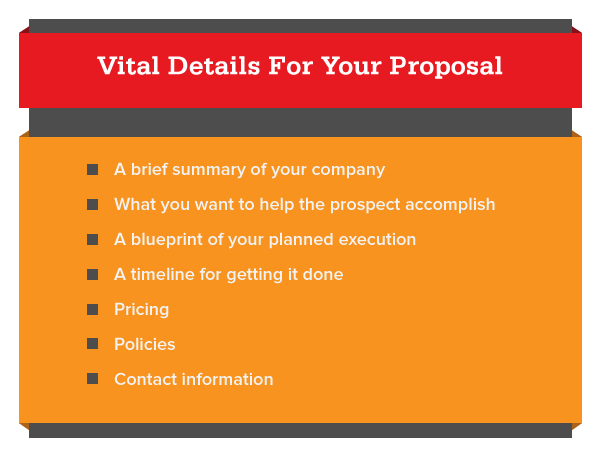Red-Hot Tips on How to Respond to an RFP and Win that Deal
Learning how to respond to an RFP (Request for Proposal) can be the same as running a profitable, successful business. Let’s face it, like everything, it’s all about hard work and understanding how to sell your business. You might probably feel that you can do fine without understanding how to sell. WRONG!
Over a ten-year period, 90 percent of small businesses fail. That means nine out of ten businesses are failing to either meet a market need or, if they do fulfill a need, they aren’t adequately expressing how they do so.
First and foremost, to accomplish these two things, you need to make sure that your response is in exact accordance with the requirements outlined in the RFP. Provide all the information requested, in the order and format specified. The first indication of your professional qualification is your competency to follow directions or specifics.
Follow these nimble tips to help you craft a convincing response to an RFP that will cut through the muddle:
- Try to grasp what the RFP entails
- Review the components of the RFP
- Review the prospect’s requirements. It is imperative that you respond to all questions poised. (Try making a checklist to refer back to.)
- Create a business proposal
- Respond to objections
- Present your Proposal

The know-how to creating a stellar business proposal
“The best way to predict your future is to create it”― Peter F. Drucker successful management consultant
Your business is great. You’ve invented something better than the burger. You offer an awesome product/service at such a cool price that people should be banging your door down.
And they might be. But they’re all requesting a business proposal. Proposals are a fact of life. We all make them, and we’re all trying to blow our prospects off their feet. The quality of a business proposal can significantly optimize your chances of winning the deal. Knowing how to write a knockout proposal might be tricky, but, with the right ammo, you can shoot your way ahead of any competition:
Demonstrate knowledge of your client

Prove from the get-go that you understand the client’s objectives/request as they relate to the product or service you can provide. This may seem like you’re telling them things they already know, but, in reality, clients want to be sure you understand their request and their needs. Briefly state the problem before launching into your solution. Usually, creating a business proposal can be time-consuming, but with a proposal software, it eases the process and gives you more time to focus on the details, not the formatting.
Beware of the merry-go-round process

It’s enticing to keep recycling portions of previous proposals — those copy-and-paste buttons might seem like timesavers — but be careful about relying too much on boilerplate material. The last impression you want to give is that your proposal is the same off-the-shelf response you give to everybody. Again, this is part of convincing the client that you understand their specific request and you are responding in a tailored format. You can get some kick-ass ideas by jumpstarting your proposals using one of Quote Roller’s more than 35 free, sector-based templates that you can edit to your own format. It’s easy with lots of already written parts — just make sure to then personalize it to your client and their needs.
Speak like your client

Embrace your proposal as another chance to connect your client. To do so, you need to learn to speak your clients’ language rather than assuming they will learn how to speak yours. Just like your company, your prospective client’s company uses a specific corporate and industry lingo to communicate. As you assess your client’s needs, you will learn to understand and even respond in their “tongue.” Use it in the proposal to give your client a sense that you will fit right in with their business. This creates a subliminal acceptance and affiliation from the very beginning. However, don’t get too “jargony” — if you are a website designer and are bidding to a construction company, don’t bog them down with Java, HTML5 and other stuff specific to your industry, be specific to theirs.
Keep it elementary, my dear Watson
You might have come across different proposal samples or templates, but always remember to stick to the vital details, such as:
- A brief summary of your company (brief as in paragraphs, not pages)
- What you want to help the prospect accomplish
- A blueprint of your planned execution
- A timeline for getting it done
- Pricing
- Policies
- Contact information


Share one of your many success tales
Human beings are story lovers. Telling a story of your success in your proposal can be very powerful. When you tell a story about how your product/service was able to help overcome another customer’s challenges, your new prospect will trust that you’ll be able to help them in a similar way. When you share a success story, it acts as a third-party endorsement. If you are using a proposal software like Quote Roller, you can even include a video right there in the proposal, allowing your happy clients to share the story for you.
Spiff it up like a pro
The highest level of professionalism needs to be maintained throughout the proposal. Spelling and grammar might not count in an in-house company memo, but they do in a business proposal. The proposal can be formatted in a variety of ways. Whichever format you choose, just make sure it is appropriate and it represents your company with dignity, poise and respect, while being responsive — like a web-based or PDF proposal — so it looks just as good, no matter where it’s opened. Showcase your capabilities. Demonstrate your experience and expertise with references and benchmark projects of a similar size or scope. Illustrate your suitability for the project.
All roads lead to a call to action
As a professional, you must ask for the business, both figuratively and literally. The style and contents of the proposal should communicate your desire for the business, but so many of us neglect to actually ask for the business. As the saying goes, “Ask and ye shall be given.”
Sales techniques for responding to client objections
“Say it [sell it] in terms of the customer’s request…not in terms of what you’ve got to offer.” — Jeffrey Gitomer, acclaimed sales author.
Before creating the proposal, you put in time and effort to ensure that your product or services are needed by your client. However, no matter how compelling the need may be and no matter how excellent your proposal might be, clients will always raise objections and demand additional information.
Responding to your client’s objections in the right manner is important because it takes you closer to winning the deal. Consequently, you should welcome objections because, once they’re answered, they give you the potential energy that takes you nearer to closing that sale.

Usually, a lack of understanding on the part of the client is a reason for the objection. It is important to work with the client to understand the exact nature and extent of his objection. When you welcome objections, you communicate to the client that his needs are important and will be addressed accordingly. An example of this approach is:
“Mr. Alan, good question! Another client asked me the same thing. Let me tell you about how I worked with him to get rid of this concern…”
The ability to anticipate an objection is very important but not nearly as important as developing the skills to respond to the objections. No matter how hard you try to list every possible objection, there will still be times when the prospect raises an objection that you’ve never thought of before.
These four steps will help you in dealing with objections:
- Listen to objections. Don’t be offended by objections — you gotta have thick skin in sales! Give him or her the chance to explain exactly what’s bothering him. Actively listen to the prospect, repeating back what the client just said, like, “I see, you’re concerned about…” or “I understand that you’re unsure of…” These both show that you’re listening and gives the prospect a chance to clarify.
- Try to read the prospect’s mind. Sometimes the first objections aren’t the client’s real concern. For example, many prospects don’t want to admit that they’re really worried about the Benjamins, so they’ll raise a host of other objections instead. Before you respond, ask a few exploratory questions, like “Is…a particular issue? Have you had trouble with it before?” Using in-proposal analytics lets you know how much time they spent looking at what part — usually what they’re mulling over is what they’re really worried about.
- Respond to the Objection. Once you understand the objection, only then should you respond. When a customer raises an objection, they’re actually showing their worries. Your task at this point is to relieve their worries. If you have your statistical success rate or a really happy customer tucked into your pocket, by all means bring them to the table – hard facts make your response stronger.
- Confirm. Make sure you’ve responded to the prospect’s objection fully. “Does that make sense?” “Have I answered your concern?” “Do you have any other doubts or concerns?”
Presenting Your proposal and getting it signed
“People don’t want quarter-inch drills. They want quarter-inch holes.” — Theodore Levitt, economist.
A request for proposal presentation serves a number of purposes. It’s rare that you win a proposal based on an RFP response alone. On the other hand, the process is certainly used to narrow down the list and cut the slack. Once you’ve made it past the first cut, you may be asked to make a formal presentation.

The most important aspect of the presentation approach is capturing the reader’s attention and focusing it on the win strategy and proposal themes. If the win strategy and proposal themes are designed to convince the customer that the proposal provides the best value, then the presentation approach must be designed to make and prove this point as often as possible.
Great ideas and appropriate pricing are important but even those things won’t help your proposal rise to the top of the competitive pile if it looks sloppy. In the 21st century, who still wants to get bogged down reviewing stacks of paper? Be flexible. Go digital. Carefully consider your packaging. The way you package and deliver your proposal can create a positive inclination that may not be on the checklist the client is using to compare and contrast various proposals.
Since they haven’t (thank goodness) invented a machine yet that takes the human out of judging business proposals, decisions and ratings are often subjective. Submitting your document electronically, while using a proposal software like Quote Roller not only saves you time, it helps make your proposal easy-to-read and to understand, as it’s accessible from anywhere and easy to use.
These quick steps are essential when presenting your proposal:
- Prepare yourself. Know your facts.
- Practice. Practice your proposal, carefully understanding it in summary until you’re ready. (But don’t memorize or you’ll sound like a creepy robot and won’t gear your presentation toward your client!)
- Speak in a nice, soft, clear voice. (Also remember to speak loud, but from the diaphragm)
- Ask for any questions, concerns or opinions — you never know who might surprise you!
Sometimes, responding to an RFP at first might seem like someone is trying to push you down a cliff, but as long as you’re smart, you pay attention to details, present something that completely suits your client’s request, don’t let the contents of the RFP deter you. Always proofread your proposals before sending and make sure you answer all questions poised.
Be confident with your presentation. Respond to objections positively and in the right manner. Be flexible. Create your proposal today using a proposal software and see your proposal pull ahead of any competition!

Comments